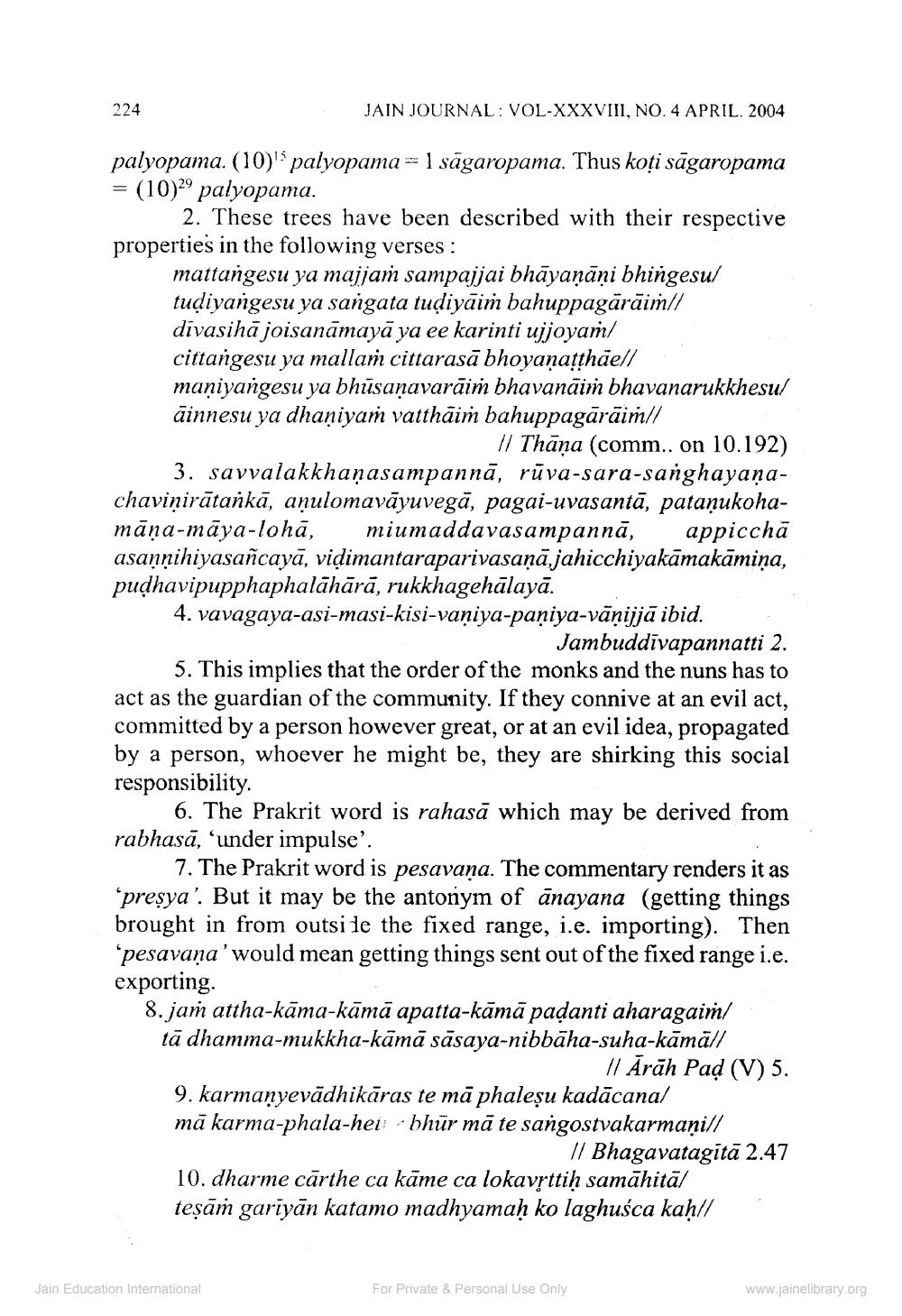________________
224
JAIN JOURNAL VOL-XXXVIII, NO. 4 APRIL. 2004
palyopama. (10) palyopama = 1 sagaropama. Thus koti sāgaropama (10)29 palyopama.
2. These trees have been described with their respective properties in the following verses:
mattangesu ya majjaṁ sampajjai bhāyaṇāņi bhingesu/ tuḍiyangesu ya sangata tuḍiyāiṁ bahuppagārāiṁ// divasihā joisanāmayā ya ee karinti ujjoyaṁ/ cittangesu ya mallaṁ cittarasā bhoyanaṭṭhāe// maniyangesu ya bhusaṇavaraim bhavanaim bhavanarukkhesu/ ainnesu ya dhaniyam vatthaim bahuppagārāiṁ//
Il Thāna (comm.. on 10.192) 3. savvalakkhaṇasampannā, rūva-sara-sanghayaṇachavinirātankā, aṇulomavāyuvegā, pagai-uvasantā, pataṇukohamaṇa-maya-loha, miumaddavasampannā, appiccha asaṇṇihiyasañcayā, viḍimantaraparivasaṇā,jahicchiyakāmakāmiņa, pudhavipupphaphalāhārā, rukkhagehālayā.
4. vavagaya-asi-masi-kisi-vaniya-paniya-vāṇijjā ibid.
Jambuddivapannatti 2.
5. This implies that the order of the monks and the nuns has to act as the guardian of the community. If they connive at an evil act, committed by a person however great, or at an evil idea, propagated by a person, whoever he might be, they are shirking this social responsibility.
6. The Prakrit word is rahasă which may be derived from rabhasă, 'under impulse'.
7. The Prakrit word is pesavana. The commentary renders it as 'presya'. But it may be the antonym of anayana (getting things brought in from outside the fixed range, i.e. importing). Then 'pesavaṇa' would mean getting things sent out of the fixed range i.e. exporting.
8. jam attha-kama-kāmā apatta-kāmā paḍanti aharagaim/ tā dhamma-mukkha-kāmā sāsaya-nibbāha-suha-kāmā// Il Arah Paḍ (V) 5.
9. karmaṇyevādhikāras te mā phaleṣu kadācana/ mā karma-phala-hei bhur mā te sangostvakarmaņi// // Bhagavatagītā 2.47
10. dharme carthe ca kāme ca lokavṛttiḥ samāhita/ teṣām gariyān katamo madhyamaḥ ko laghuśca kaḥ//
Jain Education International
For Private & Personal Use Only
www.jainelibrary.org




